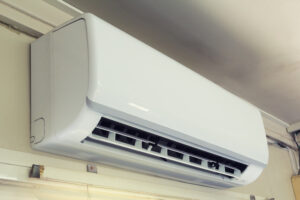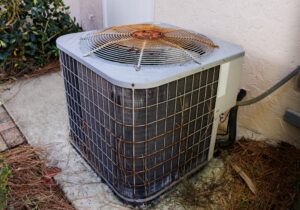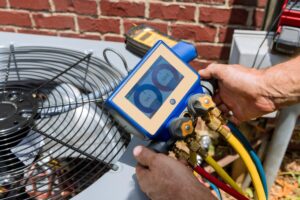Has your family been fighting over the thermostat lately — with some members arguing it’s too cold while others say it’s not cool enough? If so, you’re not alone. Many households struggle with finding the perfect temperature that suits everyone. But there’s a solution that can put an end to these thermostat wars: ductless mini-split systems.
Ductless mini-splits offer a versatile, efficient, and customizable way to heat and cool your home. They can provide individualized climate control to different rooms, which means everyone can enjoy the ideal temperature for their comfort needs. In this guide, we’ll explore the benefits of mini-split systems and walk you through the installation process, highlighting why these systems might be the perfect HVAC solution for your home.
Benefits of Ductless Mini-Split Systems
Why have these HVAC systems gotten so much hype recently? Well, ductless mini-splits come with numerous advantages that make them a top choice for heating and cooling homes. Let’s take a closer look at the benefits of switching to ductless mini-split air conditioners:
Energy Efficiency
One of the standout benefits of mini-split systems is their energy efficiency. Unlike traditional HVAC systems that can lose energy through ductwork, ductless mini-splits eliminate this issue entirely. This results in less energy loss and lower utility bills.
Cost Savings
Due to their efficient operation, mini-split cooling systems often result in significant cost savings over time. The initial investment can be higher than traditional systems, but the reduction in monthly utility bills can quickly offset this.
Individual Climate Control
Each indoor air handling unit in a mini-split system can be controlled independently. This means you can set different temperatures for different rooms, catering to individual preferences. No more arguments over the thermostat!
Easy Installation
The installation process for ductless mini-splits is simpler and less invasive than traditional HVAC systems. There’s no need for extensive ductwork, which means less disruption to your home and quicker setup.
Improved Indoor Air Quality
Ductless mini-split systems have advanced filtration options that help reduce dust, bacteria, pollen, and other particulates in the air. This leads to improved indoor air quality and a healthier living environment.
Versatility
Whether you need a heating or cooling solution, mini-split systems can do both. They are perfect for older homes without existing ductwork, new additions, or rooms that need extra climate control.
The Installation Process
Installing a ductless mini-split system involves several key steps. Here’s a breakdown of what you can expect when HVAC professionals install these units:
1. Assessment and Planning
The first step is for an HVAC professional to assess your home’s heating and cooling needs. They will determine the best locations for both the indoor air handling units and the outdoor unit. Proper placement is crucial for maximizing efficiency and comfort.
2. Mounting the Indoor Units
Indoor units are typically mounted high on walls, but they can also be installed on the ceiling or floor. The chosen spots should be free of obstructions to allow for optimal air circulation.
3. Installing the Outdoor Unit
The outdoor unit, which houses the compressor, is usually placed on a concrete pad or mounted on the exterior wall. It needs adequate space around it to function correctly and should be installed in a location that minimizes noise disturbance.
4. Connecting Refrigerant Lines
Next, the indoor and outdoor units are connected via refrigerant lines, a condensate drain line, and electrical cables. These lines require only a small hole in the wall, making the process less invasive than installing ductwork.
5. Sealing and Insulating
To ensure efficiency, all connections and holes are properly sealed and insulated. This step helps prevent energy losses and maintains the system’s performance.
6. System Testing and Calibration
After installation, the system is thoroughly tested to ensure everything is working correctly. Your HVAC professional will check the refrigerant levels, test the electrical connections, and calibrate the system to optimal settings.
Regular Maintenance for Longevity
Like any HVAC system, mini-split heating systems require regular maintenance to ensure they continue to operate efficiently. This includes cleaning or replacing filters, inspecting the refrigerant lines, and checking for any issues with the indoor and outdoor units. Regular maintenance can prevent costly repairs and extend the life of your system.
Is a Mini-Split Right for You? Call Today to Find Out!
Ductless mini-split systems offer a host of benefits, from energy efficiency and cost savings to improved indoor air quality and individual climate control. They are an excellent choice for anyone looking to upgrade their heating and cooling solution, especially in homes where traditional HVAC systems might not be practical.
If you’re ready to put an end to thermostat wars and enjoy the benefits of mini-split systems, contact H.J. Faust, Inc. Our team of HVAC professionals is here to guide you through the installation process and ensure you get the most out of your new system. With easy installation and significant cost savings, ductless mini-splits could be the perfect fit for your home’s climate control needs.
For more information on mini-split installation, reach out to H.J. Faust, Inc. today and take the first step towards a more comfortable and efficient home.



